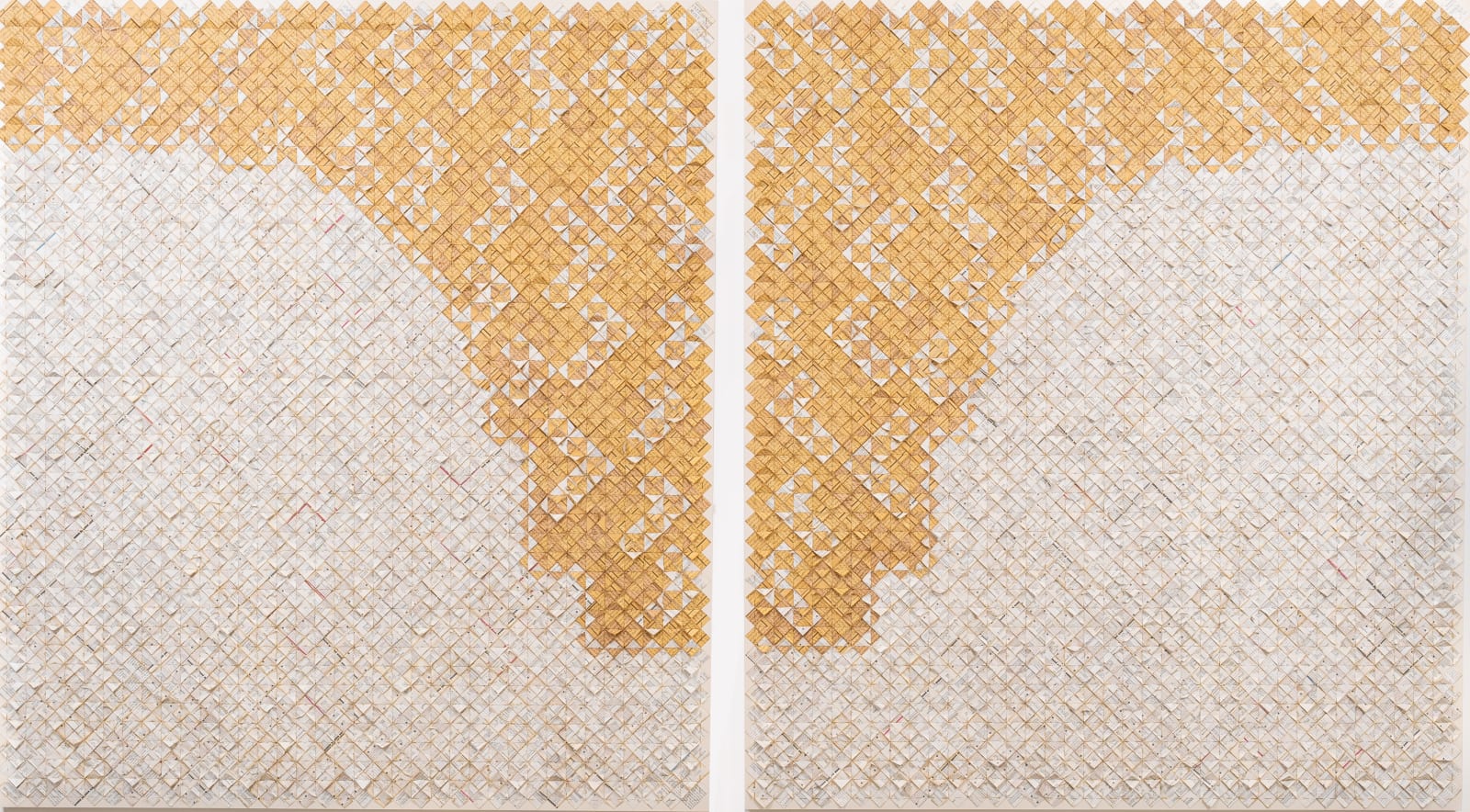
Catalina Swinburn b. 1979
59.06h x 102.36w x 3.94d in
Catalina Swinburn’s work engages with ancestral rituals,
sacred geographies, and memory through the act of weaving
paper from vintage documents, as to regenerate narratives
and articulate both a sense of urgency and a mode of
resistance. Her recent body of work is rooted in field research
across Tunisia, focusing on the sacred topographies and sonic
trajectories of zawiyas, sanctuaries of Sufi devotion that
persist across the Maghreb. These spaces operate
simultaneously as tombs, shrines, and communal gathering
points, where spiritual and performative histories are
preserved and re-enacted. The artist explores these spiritual
cartographies, often weaving together sacred architectures,
sonic textures, and performative rituals. Swinburn meditates
on the interactive triad of space, people, and ritual, which are
the core elements that activate the zawiya as a performative
spiritual site. Hizb takes as its point of departure a segment
from the Īsāwiyya hadra ritual, specifically the opening
sequence that lends the work both its name and sonic
structure. Composed through paper weaving, the work enacts
the tempo diagrams and rhythmic strata of the ceremonial
form, transposing the performance’s polyrhythmic
intensifications into a visual and material plane. The ḥizb
establishes a sonic arc marked by intensification, tonal ascent,
and cyclic repetition, all of which are qualities that Swinburn
registers through shifts in density, interval, and directional
flow. The visual composition reflects the ritual’s experiential
sense of journey and transformation, where repetition
becomes a vehicle for elevation, internalisation, and ultimately,
spiritual transference.